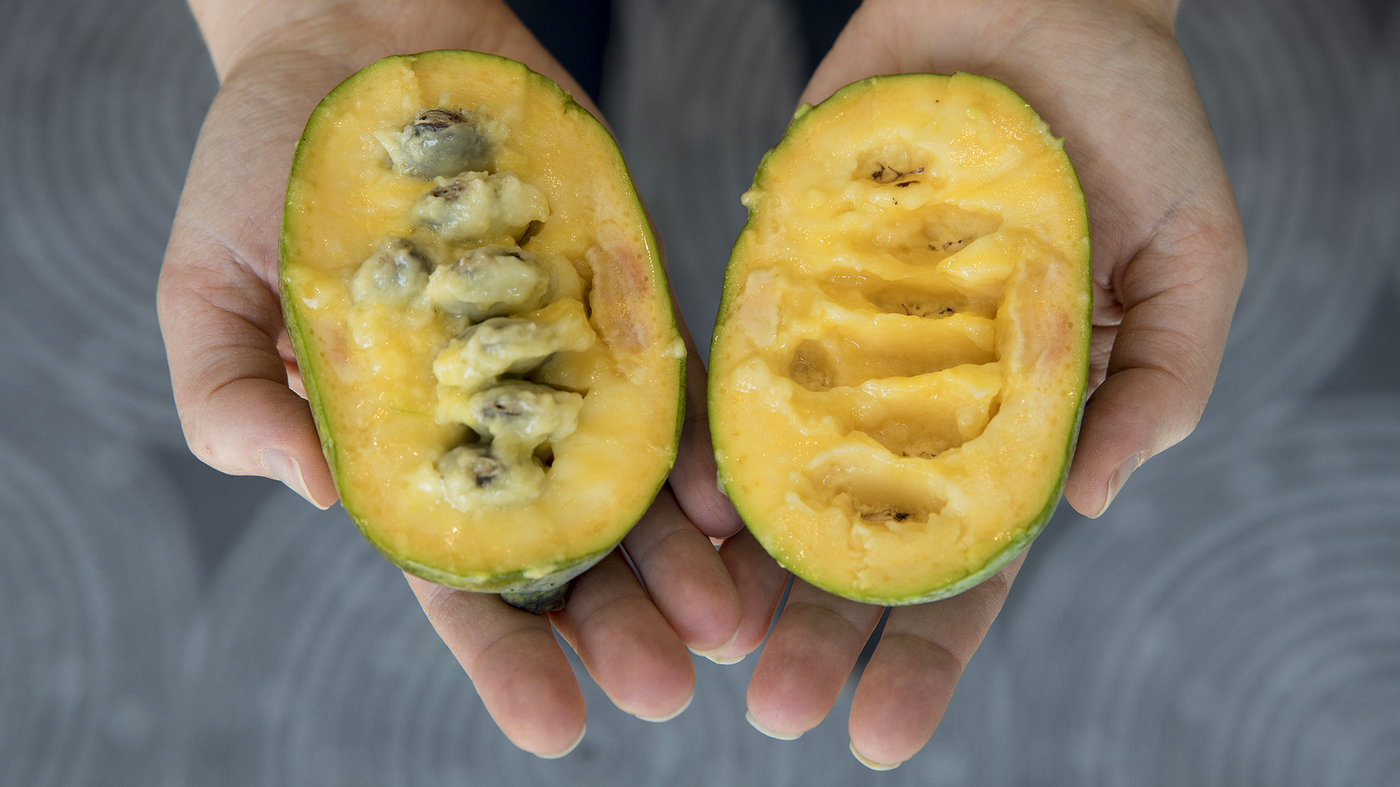
Pawpaw is the best food you’ve never eaten, an obscure tropical fruit-tasting treasure that’s the subject of many a foraging trip. Here are six fascinating facts about this under-the-radar fruit that’s getting a whole lot of buzz lately.
Paw paw, also called graviola, soursop or guanabana, comes in a variety of shapes and sizes, and its white, fibrous pulp is rich in nutrients. Although this tropical fruit is relatively unknown in the United states, it is a common component in fruit salads, drinks and desserts in the Central and South American countries where it grows. Low in calories and high in vitamins and minerals, it can supplement your diet with a wide array of nutrients.
1) They’re (Mostly) Wild
Pawpaw are native to North America, growing wild in 26 states, mostly east of the Mississippi. It’s probably best known and loved in the Mountain South, where stands of trees produce fruit that weighs between 5 and 16 ounces, making it the largest tree fruit in North America. In recent years, more pawpaw trees have been cultivated, but, for most fans of the fruit, part of the pleasure is in the thrill of the hunt for them in the wild.
2) Pawpaws Are the “Poor Man’s Banana”
Once the custard-like flesh is separated from the large black seeds, a bite of pawpaw might trigger tropical fruit flavor flashbacks. They’re described as tasting like a combination of banana, pineapple, and mango, and, because they’re often foraged for free, pawpaws earned the nickname “poor man’s banana.” They’re also known as custard apples because of the creamy texture and the similarity in appearance to the apple.
3) They’re Nutritional Powerhouses
According to Kentucky State University’s Cooperative Extension Program, pawpaws are sky high in vitamin C, magnesium, iron, copper, and manganese. They are also a good source of potassium and several essential amino acids, and they also contain significant amounts of riboflavin, niacin, calcium, phosphorus, and zinc. Paw paws contain these nutrients in amounts that are generally about the same as or greater than those found in bananas, apples, or oranges.
4) Cooks Love Them

The exotic flavor and creamy texture of pawpaw makes it a star in jelly and jams, as well as a darling among bakers, who use the pureed flesh in pies and tarts. Emily Hilliard, a Southern folklorist and author of a pie blog called Nothing in the House, makes a brilliant pawpaw meringue pie, pictured below. She loves the flavor and texture, but also notes the aromatic fruit has a floral fragrance. Every autumn, Zingerman’s in Ann Arbor, Michigan, gets rave reviews for its pawpaw gelato.
5) You Can Drink Them, Too
Pawpaw is the featured ingredient of a wildly popular seasonal beer at Fullsteam Brewery in Durham, N.C., where brewmaster Sean Lily Wilson named it Dinnisen’s Orchard, as a tribute to the man who raises the pawpaw trees. Wilson said the fruit’s slight funk works well in the Belgian-style ale, now in its fourth year of production. Their tropical quality means they can easily be swapped into recipes that call for papaya, mango, or banana.
6) Pawpaw Remains Elusive
Though they’re becoming better known — one of the most searched-for food terms recently — pawpaw is still not available outside the regions in which it grows. Fans swear it’s best eaten as soon as it’s shaken from the tree. But don’t be surprised when pawpaw puree begins to appear in the frozen-food section of the supermarket, alongside guava and passion fruit puree. (It wasn’t long ago when those tropical fruits were obscure!) Pawpaw plants may be available online from several nurseries, if you want to try to grow your own.
